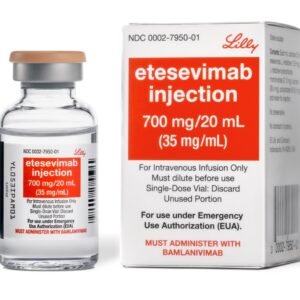Cefoperazone sodium +sulbactam sodium(
Effects and efficacy:
Used to treat respiratory tract infections, urinary tract infections, peritonitis, cholecystitis, cholangitis and other intra-abdominal infections caused by sensitive bacteria, sepsis, meningitis, skin and soft tissue infections, bone and joint infections, pelvic inflammatory disease, endometritis and other reproductive system infections.
Usage and dosage:
When intravenous administration is intermittent intravenous drip, each bottle of cefoperazone/sulbactam is dissolved with an appropriate amount of 5% glucose solution or 0.9% sodium chloride injection, and then diluted to 50-100 ml with the same solution for intravenous drip. The drip time should be at least 30-60 minutes. When intravenous push is used, each bottle of cefoperazone/sulbactam should be dissolved as described above, and the intravenous push time should be at least more than 3 minutes. For adults, 1.5-3.0g of cefoperazone/sulbactam is administered once every 12 hours to treat refractory infections. The daily dose can be increased to a maximum of 12g (cefoperazone/sulbactam 2:1). Medication for patients with renal dysfunction Patients with significantly reduced renal function (creatinine clearance <30 ml/min) have reduced sulbactam clearance, and the cefoperazone/sulbactam regimen should be adjusted. The maximum daily dose of sulbactam for patients with creatinine clearance of 15-30 ml/min is 1 gram, divided into equal amounts and injected once every 12 hours. The maximum daily dose of sulbactam for patients with creatinine clearance <15 ml/min is 0.5 grams, divided into equal amounts and injected once every 12 hours. The recommended dose for children is 30-60 mg/kg body weight/day; the above dose is divided into equal amounts and injected once every 6 to 12 hours. In severe or refractory infections, the above dose can be increased to 240 mg/kg body weight/day (cefoperazone 160 mg/kg body weight/day), divided into equal amounts, and administered 2 to 4 times a day. Neonatal medication Neonates in the first week of life should be given once every 12 hours. The maximum daily dose of sulbactam in children should not exceed 80 mg/kg body weight/day.
Adverse reactions:
Gastrointestinal reactions The most common side effects of this product are gastrointestinal reactions, among which diarrhea (loose stools) and abdominal pain are the most common, followed by nausea and vomiting. Skin reactions This product can cause allergic reactions, manifested as maculopapular rash, urticaria, eosinophilia and drug fever. It is prone to occur in patients with a history of allergies, especially those with mild neutrophil allergy to penicillin. Long-term use of this product in the blood system may lead to reversible neutropenia. Decreases in hemoglobin and hematocrit have been reported. Transient eosinophilia and thrombocytopenia have been found. Hypoprothrombinemia has also been reported. Other adverse reactions A small number of patients have adverse reactions such as headache, fever, pain at the injection site, and chills. Those who drink alcohol or receive alcoholic drugs during the use of this product may experience a disulfiram-like reaction. Abnormal laboratory tests Some patients have transient increases in aspartate aminotransferase, alanine aminotransferase, alkaline phosphatase or blood bilirubin, increased urea nitrogen and creatinine, and dysbacteriosis. Local reaction: This product is well tolerated when injected intramuscularly, with occasional transient pain at the injection site. When injected intravenously, some patients may develop phlebitis at the infusion site. If the above adverse reactions occur, please inform your doctor or pharmacist immediately. Once side effects occur, stop taking the drug immediately and notify your doctor so that the doctor can determine the extent of the side effects and take necessary measures.
Drug contraindications:
Allergic to this product is prohibited. Alcohol is prohibited. Use with caution during pregnancy. Use with caution during lactation.
Share:
Products
Our offers
Health Classification
Let us work together to protect precious health






























